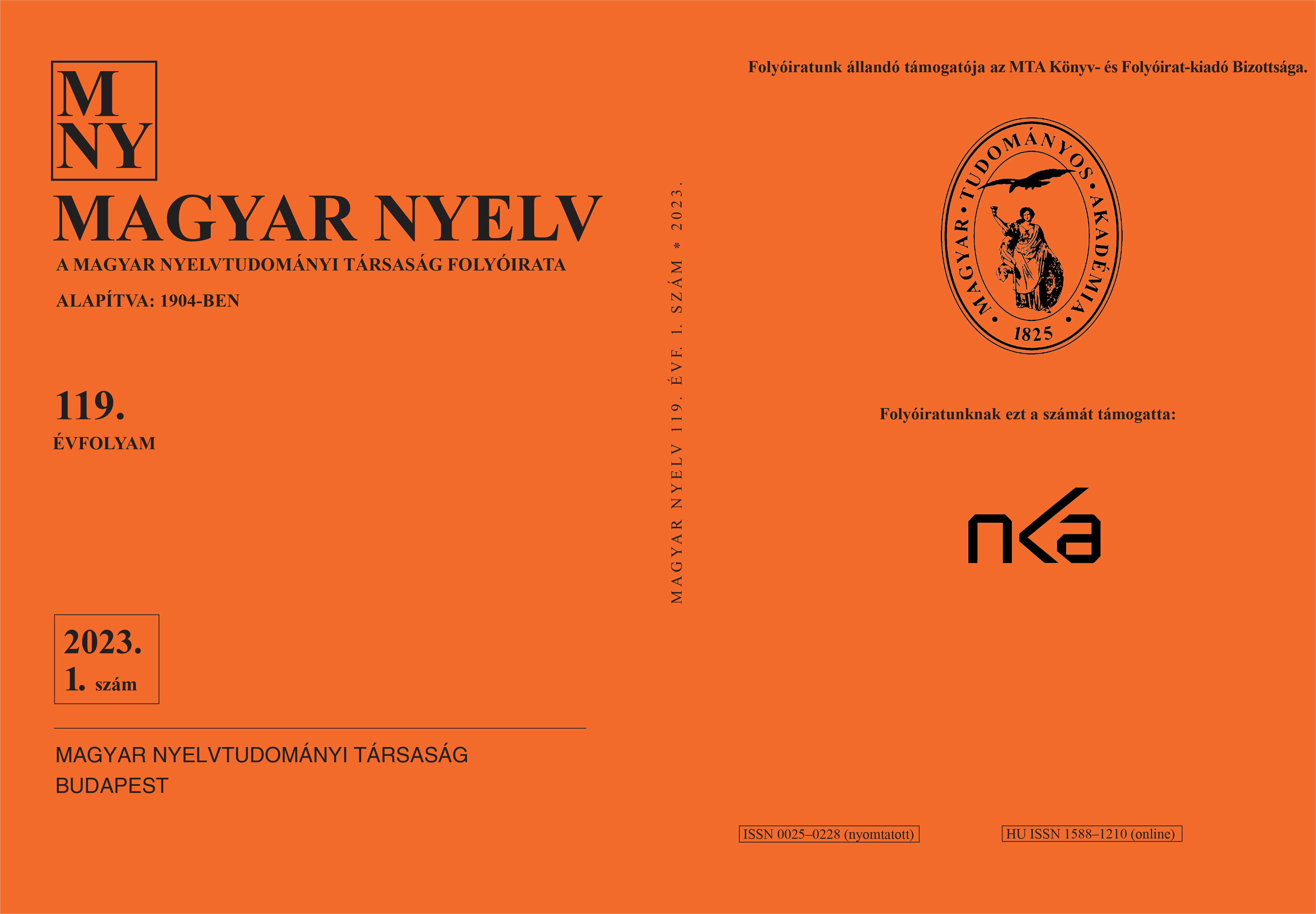Characteristics of turn-takings in conversational structure: universal features and dynamic changes
DOI:
https://doi.org/10.18349/MagyarNyelv.2023.1.1Keywords:
conversation, corpus, turn-taking, timing patterns, dynamic changesAbstract
The timing of turn-taking and its factors are a key question in conversation analysis. “Prediction theory” highlights the role of early prediction, by which the next speaker anticipates the end of the partner’s turn; this is based on the processing of various (phonetic, syntactic, semantic, pragmatic) cues, but the overall structure of the conversation can also be relevant. The paper examines the phonetic characteristics of turn-takings in 100 three-party conversations (about 20 hours in total) from the BEA database. The frequency, types and the FTO value (duration) of turn takings were examined, as well as the changes of all these along the speaker roles and the time dimension. According to the results, the frequency of turn-taking shows a dynamic change over time; turn-taking with overlapping speech occurs more frequently towards the end of conversations, and also the duration of turn-takings is influenced by their position in the conversation and by the speaker roles.
Downloads
Published
Issue
Section
License
Copyright (c) 2023 Valéria Krepsz, Anna Huszár, Viktória Horváth, Dorottya Gyarmathy, Ágnes Hámori

This work is licensed under a Creative Commons Attribution-NonCommercial-NoDerivatives 4.0 International License.
Magyar Nyelv is a Diamond Open Access periodical. Documents can be freely downloaded and duplicated in an electronic format, and can be used unchanged and with due reference to the original source. Such use must not serve commercial purposes. In the case of any form of dissemination and use, Hungarian Copyright Act LXXVI/1999 and related laws are to be observed. The electronic version of the journal is subject to the regulations of CC BY-NC-ND (Creative Commons – Attribution-NonCommercial-NoDerivatives).
The journal permits its authors, at no cost and without any temporal limitation, to make pre-print copies of their manuscripts publicly available via email or in their own homepage or that of their institution, or in either closed or free-for-all repositories of their institutions/universities, or other non-profit websites, in the form accepted by the journal editor for publication and even containing amendments on the basis of reviewers’ comments. When the authors publicize their papers in this manner, they have to warn their readers that the manuscript at hand is not the final published version of the work. Once the paper has been published in a printed or online form, the authors are allowed (and advised) to use that (post-print) version for the above purposes. In that case, they have to indicate the exact location and other data of the journal publication. The authors retain the copyright of their papers; however, in the case of an occasional secondary publication, the bibliographical data of the first publication have to be included.



